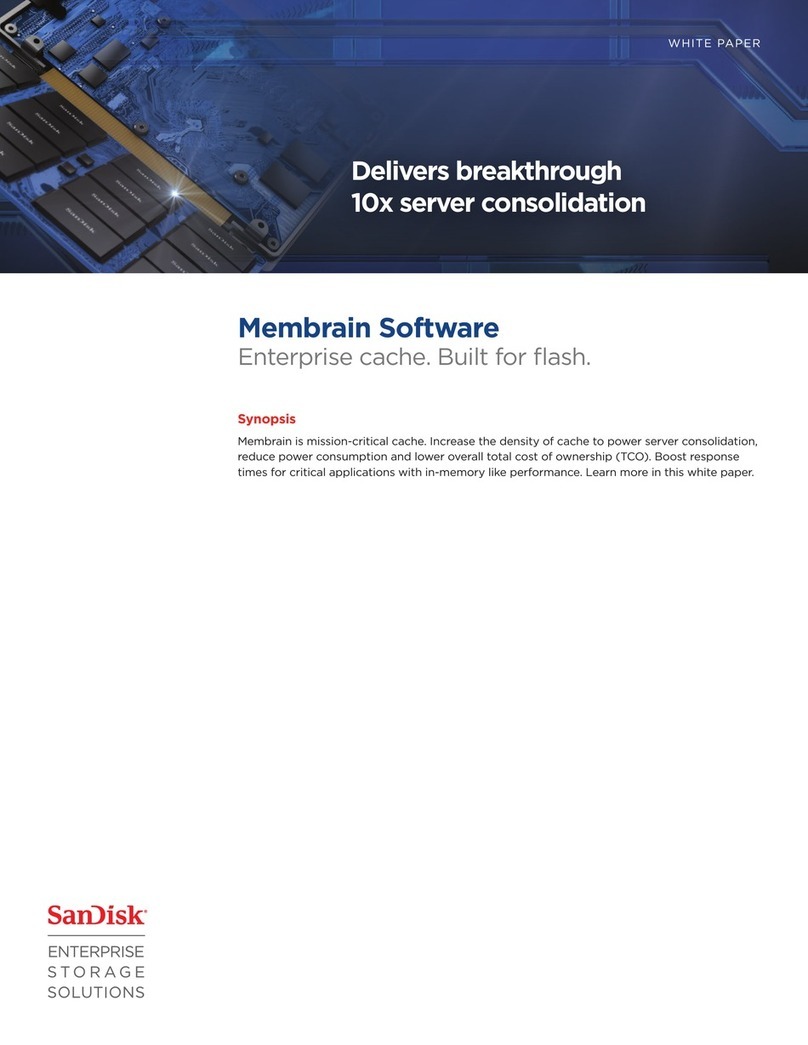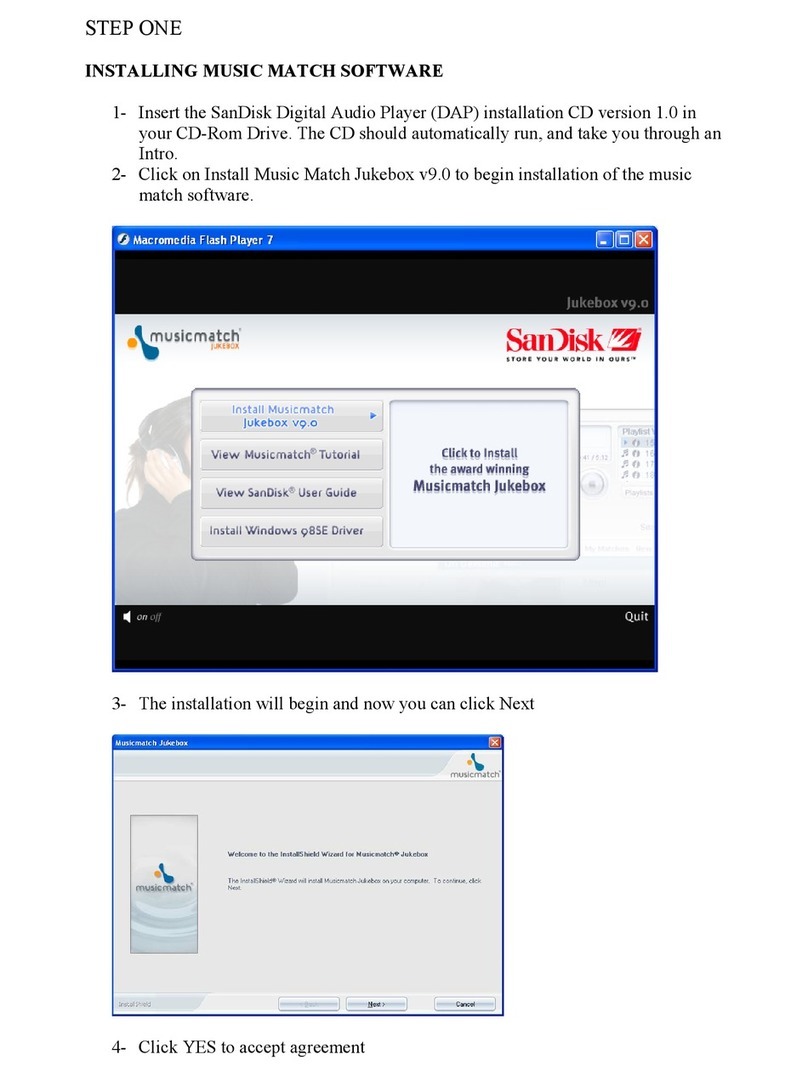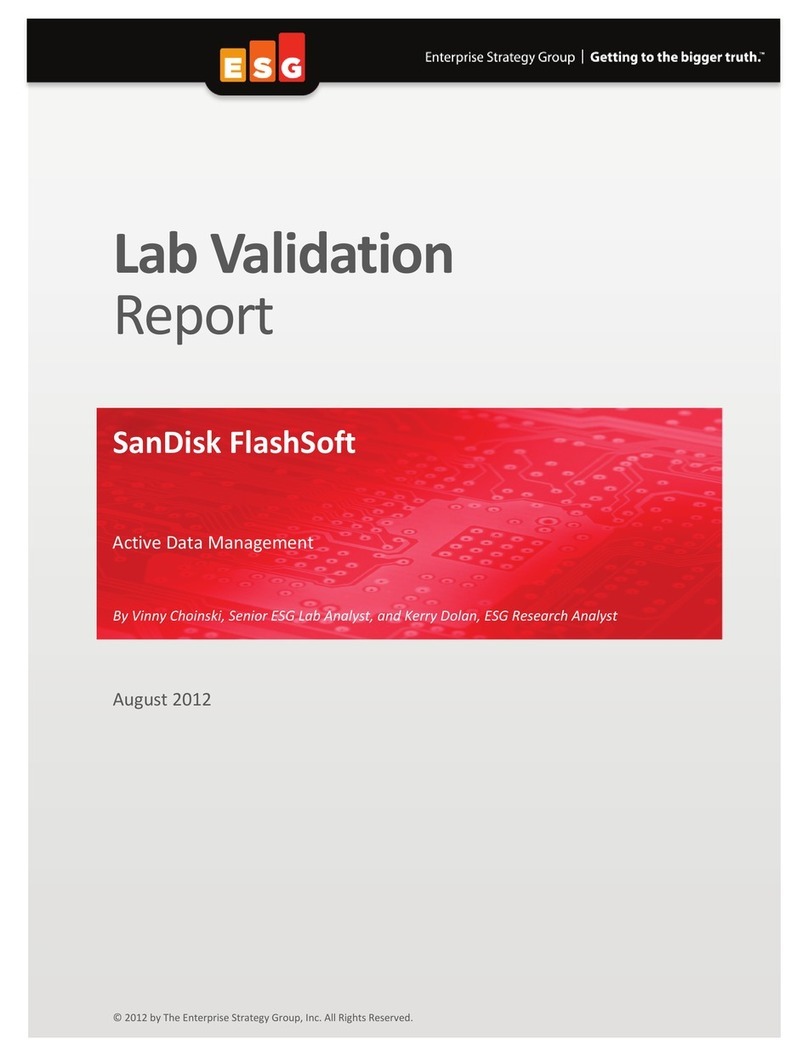
SanDisk SDK User’s Guide, Rev. 1.0
© 2003 SanDisk Corporation 4 10/2003
• At any given operational state, the maximum buffer required is 1K, except during the
download or playback states. These two depends on the host system
Security Manager Layer
This layer encapsulates the SD Security, and SD Secure Files System. Using the API, SD-Audio layer can access
this layer, and all the complexity of MKB process, AKE process, Bus Encryption/Decryption, and Audio Content
Encryption/Decryption is hidden from the application layer.
Supported Functionality with 1.0 Release
• AKE process is handled in this layer
• Bus Encryption/Decryption is performed immediately after each AKE process
successfully finished
• MKB process is handled in this layer, its been invoked during the SD-Audio initialization
• To support the download operations, generating title key method implemented in this
layer
• Title Key encryption/decryption
• Audio content encryption/decryption
• Secure file manipulation such as (open, read, delete, write, etc.) handled in this layer
• Required buffer in this layer is 1.5 Kbytes for internal use, this is need for the MKB
process after the MKB process is complete this layer only require 512 bytes for other
operations
File System Layer
This layer provides full FAT file system interface to SD card user area with API functions such as create, delete,
insert, merge files, sub-directories, file date/time, file attributes and volume labels.
Supported Functionality with 1.0 Release
• Support for FAT12, FAT16 and FAT32
• Support for short and long file names
Device Driver Layer
This layer handles all low-level I/O access to MMC card and SD card. It provides eight functions. They are:
xxx_init, xxx_drive_open, xxx_drive_close, xxx_read, xxx_write, xxx_erase, xxx_read_serial, where xxx is the
peripheral bus name, such as MMC or SPI.
Supported Functionality with 1.0 Release
• Hardware access to memory card is through SanDisk verilog host controller.
• SD protocol, MMC protocol are implemented and tested on the top of the verilog host
controller.
• SPI protocol is implemented but not tested on the top of the verilog host controller, due
to the limitation of the host controller in SPI mode.
4 SD-SDK Directory Structure
There are four directories under the SD_SDK directory.































